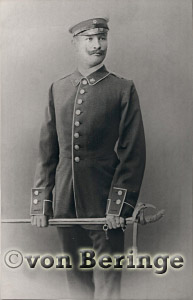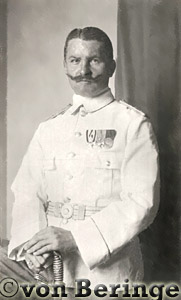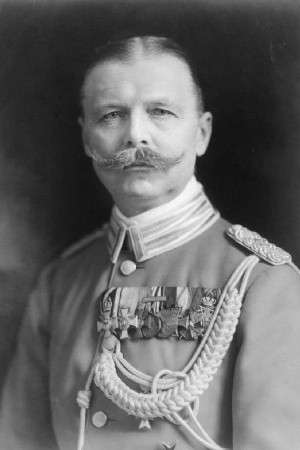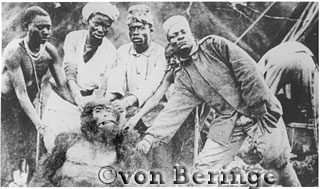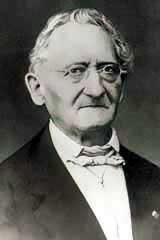Friedrich Robert von Beringe
Robert Friedrich von Beringe ( born September 21, 1865 in Aschersleben, † July 5, 1940 in Stettin) was a German imperial captain. He is the discoverer of mountain gorillas (Gorilla beringei beringei ). He came first on October 17, 1902 at Kirunga ya Sabyingo, one of the six Virunga Volcanoes in Rwanda, to the hitherto unknown gorillas. Today, all East African gorillas (Gorilla beringei ) are named after him.
Life
Robert Friedrich von Beringe was born on September 21, 1865 in Aschersleben on the northeast edge of the resin, the eldest son of Captain Charles Robert of Beringe and his wife Mathilde Louise. In the small town in present-day Saxony- Anhalt, which then belonged to the Kingdom of Prussia, the father was stationed as a squadron of Hussars 10.
After example of his father Robert suggested Friedrich von Beringe the officer's career a. From 1894 to 1906 he belonged to the 1st Hussars Regiment No. 1 to ( Death's Head Hussars ). From Beringe was coming from this time also hold the skull ring and a deep friendship with August Mackensen, later Field Marshal von Mackensen. To join the Imperial Army for German East Africa, which included the present states of Tanzania, Rwanda and Burundi, he went of his own accord.
Discovery of the mountain gorilla
On October 17, 1902, Captain of Beringe and Dr. Engeland started with five askaris and the necessary supports for the summit, They carried a tent and eight water containers themselves. In 3100 m altitude, the two Germans beat after they had collected the soil with moss as possible just covered up their tent. The ridge was so narrow that they had to be fastened on the slope of the tent pegs. The askaris and porters sheltered in caves protection, to protect themselves by fire against the bitter cold.
This set the scene for the historic meeting was prepared, which describes Beringe in German Colonial sheet with the following words: " From our camp we saw a herd of large black monkey who attempted to climb the highest peak of the volcano. Of these monkeys, we managed to deliver two large animals to the track, which crashed with a great rumbling noise in a north-east crater opening. After five hours of strenuous work, we managed an animal up on a rope. " It was a male, large, man-like apes with a body length of 1.5 m and a weight of more than 200 pounds. He had no chest hair, but huge hands and feet. "It was not possible to determine the genus of monkeys ", regretted the captain. For because of the size of the animal it was in his view not be a chimp, and the presence of - known from the lowlands - Gorillas in the area of the East African lakes had been " not found " until then. Robert von Beringe decided to send his discovery to study at the Zoological Museum in Berlin. Although the skin and one of the monkeys were eaten on the way back to Usumbura of a hyena. With the skull and part of the skeleton that arrived intact in Berlin, classified, who worked at the Museum Professor Paul Matschie (1861-1926) the animal as a new Gorilla - type, which he named after its discoverer Gorilla beringei.
In 1906, Captain of Beringe back to Germany. Until the beginning of the second world war, he lived with his family in Dresden. On July 5, 1940, died many years suffered severely from diabetes in Szczecin. To him a memorial plaque at the entrance to the 400 -square-mile Virunga National Park.

